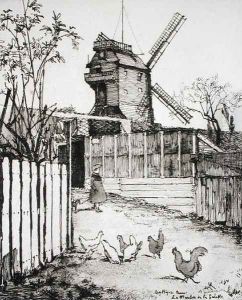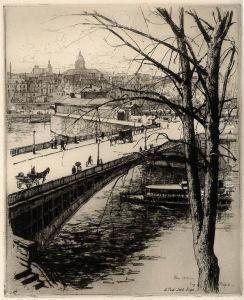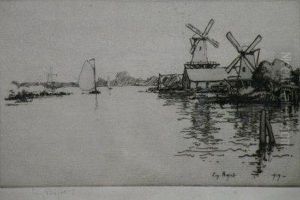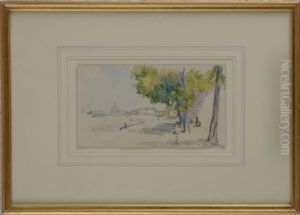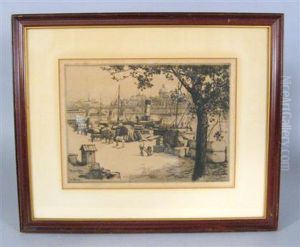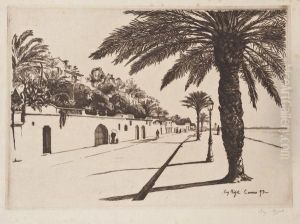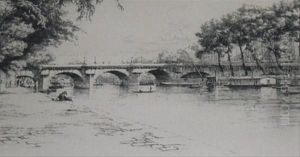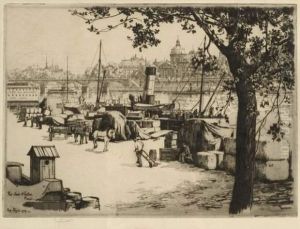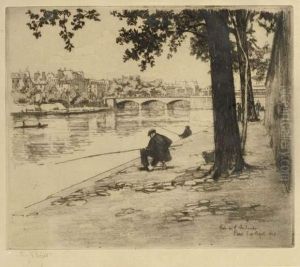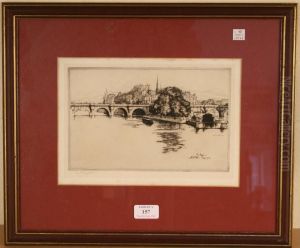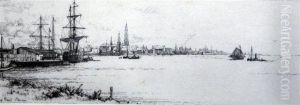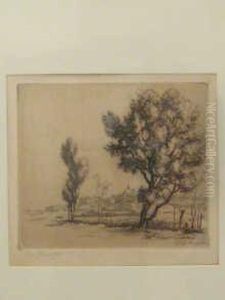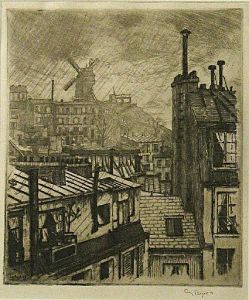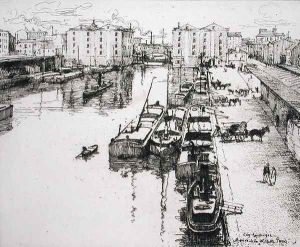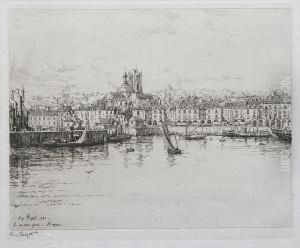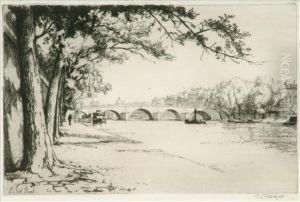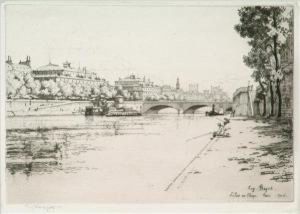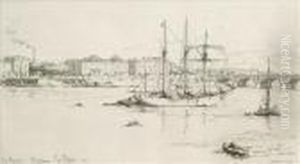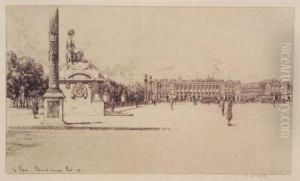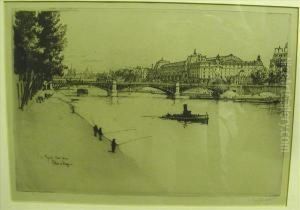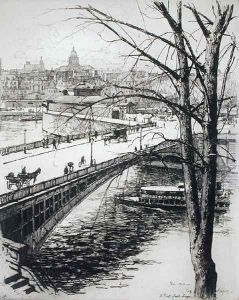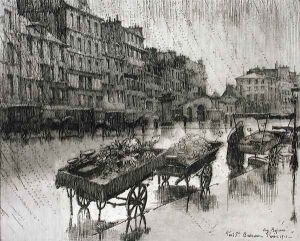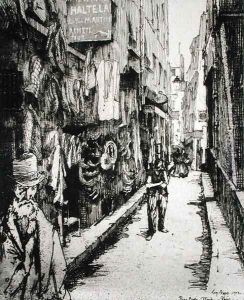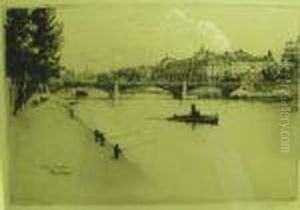Eugene Bejot Paintings
Eugène Béjot was a French artist known for his etchings and urban landscapes. Born on February 31, 1867, in Paris, Béjot was a prominent figure in the French etching revival of the late 19th and early 20th centuries. He studied at the École des Beaux-Arts under the tutelage of the esteemed Gustave Boulanger and Jules Lefebvre, who were instrumental in his development as an artist. Béjot's work often depicted the architecture and street scenes of Paris with a strong emphasis on light and shadow, which added a dramatic effect to his compositions.
During his career, Béjot exhibited at the Salon des Artistes Français, where he received numerous awards for his work. In 1891, he won the third-class medal, followed by second-class in 1892, and finally the gold medal in 1900 at the Exposition Universelle. These accolades established his reputation as a master etcher.
Béjot was also a member of the Société des Peintres-Graveurs Français (Society of French Painter-Engravers), where he was greatly respected by his peers. His etchings were celebrated for their technical precision and the ability to capture the essence of the urban landscape. Béjot's influence extended beyond France, as he was also a member of the Royal Society of Painter-Etchers and Engravers in London.
The artist's works are held in several prestigious collections, including the Bibliothèque Nationale in Paris and the British Museum in London. Despite his success, Béjot's life was marked by personal tragedy when he lost his son in World War I, an event that deeply affected him.
Eugène Béjot's dedication to the art of etching helped to revive the medium in France and inspired a new generation of artists. He continued to create and exhibit his work until his death on February 7, 1931. Béjot's legacy lives on through his etchings, which continue to be admired for their beauty and technical skill.
